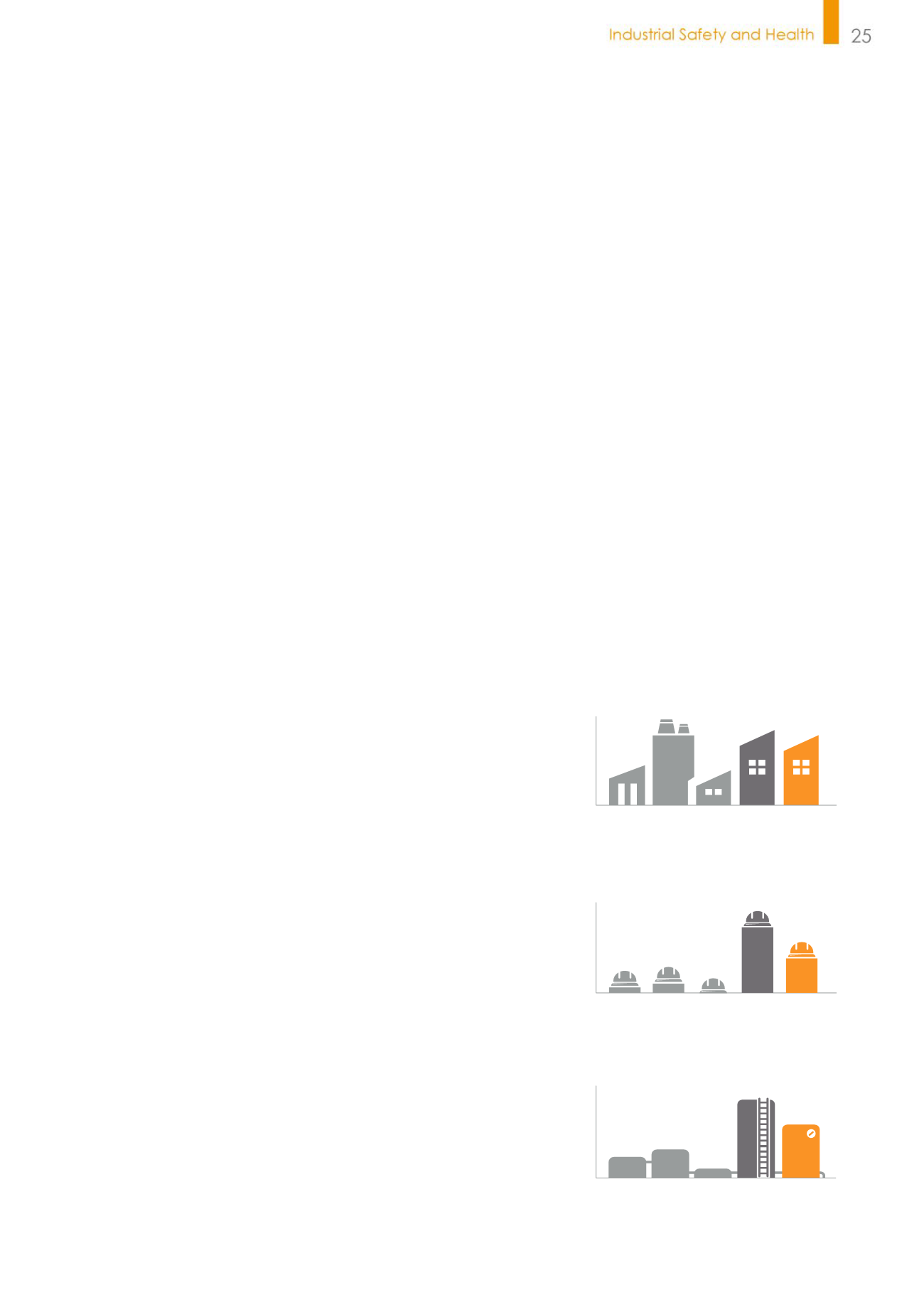
Establishing safety regulations and accident-prevention standards
Industrial safety is the foundation of corporate development. To achieve its goal of "100% industrial safety and 0% accidents",
CPC is constantly strengthening its safety culture through actively pursuing a policy based on safety disciplines, thorough
inspection, promotion of well-being and responsible healthcare, risk management and systematized operations – and in which
employee participation and continuous improvement are key elements. CPC's industrial safety performance has been recognized
not only at home but also internationally, as shown by the medal awarded by the World Safety Organization in 2005.
CPC's industrial safety and health policy – the focal points
In line with its emphasis on a culture of industrial health and safety, CPC is putting particular effort into the following focal
points, and is working particularly hard at raising awareness and team spirit among both employees and external vendors in the
interest of creating a safe and comfortable working environment.
•
Implementation of the Taiwan Occupational Safety and Health Management System (TOSHMS) and continuous improvement
of its operating environment.
•
Reinforcement of contractors' safety management practices and establishment of contractor self-management in order to
reduce occupational accidents among their employees.
•
In conjunction with the implementation of occupational safety laws, periodic review of industrial safety and health regulations
and continuous review and revision of standard operating procedures.
•
Strengthening of industrial health management, scheduling employee
health checks, analysis and tracking of health check-up information,
promotion of healthy lifestyles and emphasis on the importance of
employees' mental health.
•
Implementation of risk management and process safety management,
establishment of equipment safety management processes, thorough
inspections of oil tanks and pipelines and the installation of monitoring
and leak detection systems on long-distance oil and gas pipelines.
•
Strengthening of fire prevention and response capabilities; organization
of a local joint emergency response organization ensuring that
manpower, facilities, equipment and emergency response and rescue
gear in all units are mutually supporting so that the impact of fires
and other disasters can be minimized.
•
Implementation of graded on-site safety inspections, continuous
improvement through safety observations at the systemic, equipment
and implementation levels and increased awareness of the importance
of industrial safety disciplines.
•
Strengthening of industrial safety inspections including "management
by walking around" by senior managers, professional industrial safety
inspections and pre-operational inspections of new and renovated
work sites. All deficiencies that are discovered are tracked through
the information system until improvements have been completed.
•
Planning and implementation of safety and environmental training
and awareness programs, development and provision of online study
courses, establishment of an industrial safety test-question database and
compilation and publication of accident case-study teaching materials.
•
Reinforcement of the functions of the Safety Information Center, lending
of study materials and availability of an online data query service system.
CPC's occupational accident
statistics for the past five years
Frequency of disabling injuries
0
0.1
0.2
0.3
0.4
0.18
0.15
0.31
0.34
0.37
2010 2011 2012 2013 2014
Severity rate of disabling injuries
6
0
100
200
300
400
20
2
381
190
2010 2011 2012 2013 2014
Frequency-severity indicator for occupational injuries
1.05
2.72
11.38
7.67
0.54
0
3
6
9
12
2010 2011 2012 2013 2014


